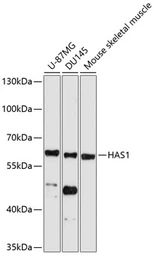HAS1 antibody
Cat. No. GTX04887
Cat. No. GTX04887
-
HostRabbit
-
ClonalityPolyclonal
-
IsotypeIgG
-
ApplicationsWB
-
ReactivityHuman, Mouse
